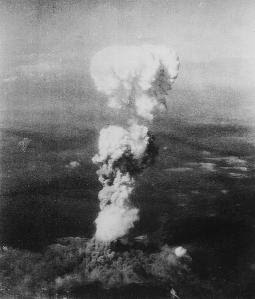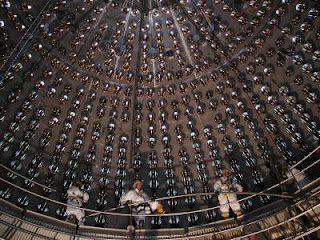Scientists that are studying the orbit of asteroid '(101955) 1999 RQ36' have concluded that there is potential for collision with the blue planet in 2182.
Discovered back in 1999, this asteroid has the potential for a collision course with Earth. Scientists calculate that the chance of '(101955) 1999 RQ36' asteroid hitting the Earth is around one 1 in 1000 chance. Although, the chance can be cut in half in conjunction with the date "2182." So that means, on that date, there is a very probable chance of impact.
This asteroid measures in at around 560 meters in diameter, so its defiantly something to worry about.
What Kind Of Destruction Will It Cause?
On June 30, 1908 the Tunguska Explosion was an asteroid that exploded in the atmosphere before it struck the ground. It created an explosion as big as 185 Hiroshima bombs and flattened 830 square miles worth of trees. Scientists estimate that that asteroid was a few tens of meters in diameter (40-70 diameters).
If '(101955) 1999 RQ36' smacks into the earth, imagine something 10 times more powerful than the Tunguska asteroid. Now use your imagination as to what kind of destruction it will cause.
No matter where this thing hits, its going to make one serious bang. You can be sure of that.
Stopping The Impact
"If this object had been discovered after 2080, the deflection would require a technology that is not currently available," Says María Eugenia Sansaturio, co-author of the study and researcher at the Universidad de Valladolid.
I think technology will be much more advanced by the time this impact is imminent.
If we decide to use a deflection strategy to move the asteroid off its orbit, some serious calculation will need to be in play. It could come back to haunt us on a later date if we don't get our calculations correct. We don't want that to happen, do we?
By 2080 I think there will be much more asteroid killing technology to chose from. But I could be wrong, you never know. We may all be doomed to a horrible death. Wait, I'll be dead before 2182 anyway!
The research from this study also included scientists from the University of Pisa (Italy), the Jet Propulsion Laboratory (USA) and INAF-IASF-Rome (Italy).
Is this asteroid something to worry about?
Related Post: Nuclear Weapons Might Save Mankind From Killer Asteroids
Source: Press release, FECYT (Spanish Foundation for Science and Technology)
Discovered back in 1999, this asteroid has the potential for a collision course with Earth. Scientists calculate that the chance of '(101955) 1999 RQ36' asteroid hitting the Earth is around one 1 in 1000 chance. Although, the chance can be cut in half in conjunction with the date "2182." So that means, on that date, there is a very probable chance of impact.
This asteroid measures in at around 560 meters in diameter, so its defiantly something to worry about.
What Kind Of Destruction Will It Cause?
 |
| Flattened trees from the Tunguska Explosion. |
If '(101955) 1999 RQ36' smacks into the earth, imagine something 10 times more powerful than the Tunguska asteroid. Now use your imagination as to what kind of destruction it will cause.
No matter where this thing hits, its going to make one serious bang. You can be sure of that.
Stopping The Impact
"If this object had been discovered after 2080, the deflection would require a technology that is not currently available," Says María Eugenia Sansaturio, co-author of the study and researcher at the Universidad de Valladolid.
I think technology will be much more advanced by the time this impact is imminent.
If we decide to use a deflection strategy to move the asteroid off its orbit, some serious calculation will need to be in play. It could come back to haunt us on a later date if we don't get our calculations correct. We don't want that to happen, do we?
By 2080 I think there will be much more asteroid killing technology to chose from. But I could be wrong, you never know. We may all be doomed to a horrible death. Wait, I'll be dead before 2182 anyway!
The research from this study also included scientists from the University of Pisa (Italy), the Jet Propulsion Laboratory (USA) and INAF-IASF-Rome (Italy).
Is this asteroid something to worry about?
Related Post: Nuclear Weapons Might Save Mankind From Killer Asteroids
Source: Press release, FECYT (Spanish Foundation for Science and Technology)











